3D Printing: The Answer to the Shortcomings We See After Three Decades of Made-in-China?
- Jorge A. Zajia

- Aug 1
- 5 min read
On January 8, 2025, I received my first shipment from 3D Design Deck, a Canadian brand that manufactures 3D-printed airplane models. I was so impressed by how well their resin models stood up against their Made-in-China die-cast counterparts that I promptly wrote an article in which I implied that 3D printing could be the future of scale airplane model collecting.
Just imagine a world in which you could just contact a manufacturer in Canada and tell them exactly what model you want. No more getting upset over all those B and N regs from NG, or the endless Delta and Emirates releases from GJ. Scalpers charging fortunes for your holy grails on eBay? Not a problem, 3D printing can give you a better one for a fraction of the cost.
That was an admittedly naive thought, but, well, I am naive, and I was also trying to sell 3D Design Deck models. They do fine, by the way.
3D Design Deck airplane models compare well to die-cast models, and 3D printing allows for the production of niche and rare subjects not usually found in die-cast.
The morning after I published that article, I went to purchase a 1:200 die-cast model for my personal collection from a seasoned local collector who happened to have many old models, including many made by Martin Beacom, an influential modeler from England. I had heard about these 1:200 home-made models from the UK, but had never seen one in person.
I could not help but notice how, in spite of their fundamental differences, 3D printed Canadian models from 2025 shared many similarities with spun-cast British models from the 1990s. Presumably, by virtue of both being home-made models in Western countries.
Handwriting on the boxes and liveries applied using decals and UV printing rather than pad printing are some of the characteristics that indicate these models are not mass-produced in China.
A striking difference was how these two types of models came to be.
Before the boom of Made-in-China airplane models during the 1990s, there was very little choice for collectors to obtain precision aircraft replicas other than from aviation enthusiasts who made them from scratch at home. The rise of manufacturing in the Far East, with its advantageous economies of scale and lower production costs, almost extinguished these home-made model-making outfits.
Some collectors have argued that the move to China was good, as it would not have been viable to produce many of the die-cast airplane models that have been made to this day if it weren't for the benefits of mass production.
But clearly, mass production has also been failing to meet the needs of many collectors, as evidenced by the rise of successful 3D printers, which dominate the growing resurgence of the home-made airplane model segment.
On the flip side, it can also be argued that if it wasn't for 3D printing (or any other form of home-made model making), many models would not have seen the light of day either!
Chinese mass production is as responsible for almost killing spun-cast models from the UK in the 1990s as it is for kickstarting 3D-printing model making in the 2020s.
So, it begs the question: are we coming full circle? Has mass production of die-cast airplane models failed?
I don't think so.
Mass production in the Far East is not shrinking. Also, 3D Design Deck is expanding at such a pace that those of us looking from the outside are wondering if they are approaching the limits of home-made production. It will be interesting to see if and how they scale up. There are many factors at play, but it would not be surprising to see 3DD growing to become a Western version of a Chinese airplane model factory rather than the boutique operation they currently are.
Instead, we could be looking at a small point of a much larger cyclical pattern. A point of equilibrium in which mass production gives up some of its potential growth to allow for a palpable resurgence of small home-made manufacturers, many of which could evolve into the next generation of large mass producers of airplane models, just like 1:200 home-made models from the UK gave birth to InFlight200, today's leader in the 1:200 market, more than 20 years ago. By the way, there is also a resurgence of 1:200 home-made metal models made in the UK in the form of SkyClassics models, look them up.
I find this topic fascinating because airplane models are my great passion. I spend a lot of time perusing through the community forums and social media groups, and one of the most common topics discussed there is the dissatisfaction with the release choices of established manufacturers. Releases have become largely predictable, and while most manufacturers try to include a mix of exciting, niche, and exotic subjects in their announcements, they continuously leave many collectors dissatisfied.
3D printing has been getting a lot of attention lately as a potential avenue to effectively satisfy the demand of unattended markets. But it is evident that anybody entering the business of producing scale airplane models quickly starts to shift their focus to more mainstream subjects. Which is a logical move if profitability is the goal.
But the paradox is that the market of mainstream subjects is more competitive, and consumer behavior is not as straightforward as one might think, as there are plenty of seemingly popular models gathering dust like a champ on the shelves of retailers worldwide.
In the end, there is both bad and good news.
The bad news is that no, 3D printing will likely not give you that holy grail that no other manufacturer wants to make, in spite of, at least in your eyes, it being a no-brainer release.
The good news is that all manufacturers, including the big boys from the Far East, as well as home-made outfits in the West, will also likely give you many holy grails (some that you don't even know you need in your collection) in due time.
The fact of the matter is that this hobby is so quirky that I don't think there will ever be a one-size-fits-all solution, and no matter what manufacturers do, there will always be someone unsatisfied.
Make no mistake, there are modelers out there who can fill in the gap and make that model that no one else will. Unfortunately, the skill level required would make a made-to-order scheme not worth the value for most mortals.
At the end of the day, you do have to buy what you like and like what you buy (and this includes not buying what you don't like).
Take a break from all the releases that bombard us month after month, and go enjoy what you have right now. Make an impromptu diorama, take some artistic photos of your models, tell us why you love a particular model. Just enjoy the ride, because that holy grail will show up when it does, regardless of how many wishlist threads you post on MAF and DA.C, and how many requests you send to 3D Design Deck and NG.






























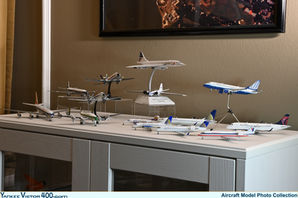
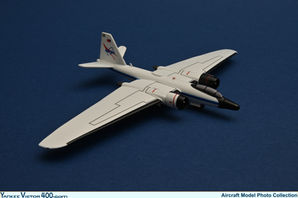


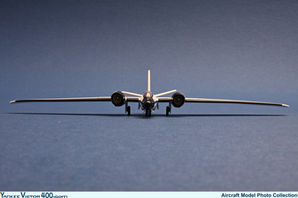


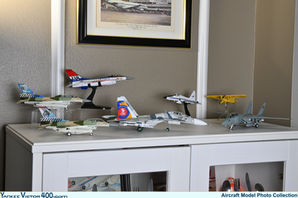

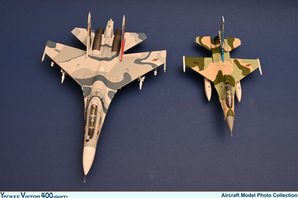












Comments